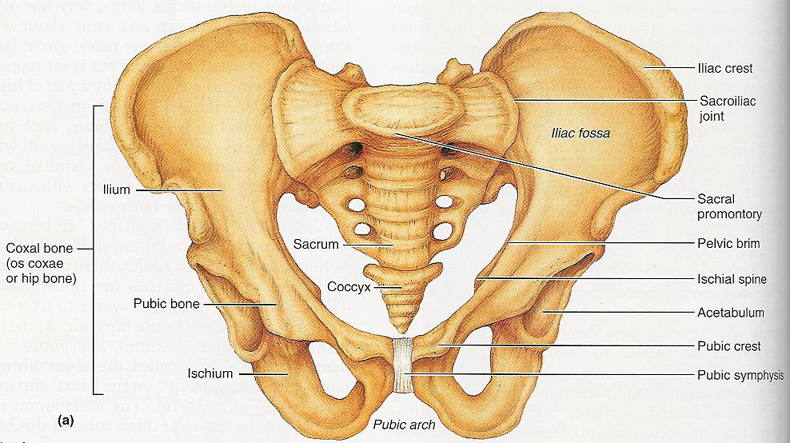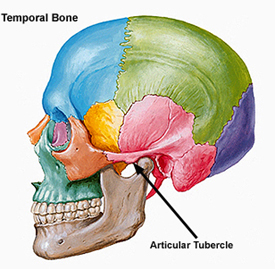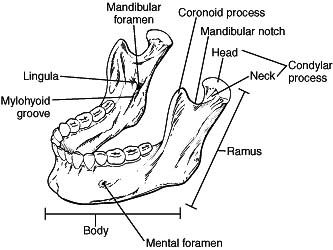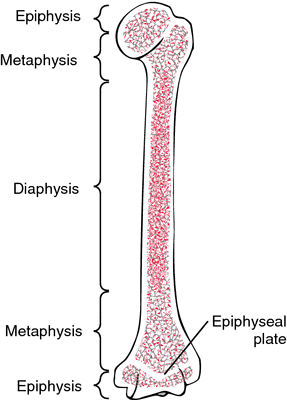Instructions for Side by Side Printing
- Print the notecards
- Fold each page in half along the solid vertical line
- Cut out the notecards by cutting along each horizontal dotted line
- Optional: Glue, tape or staple the ends of each notecard together
Anatomy & Physiology Lab 1: Overview of the Skeleton
front 1 Skeleton | back 1  -the body's framework, composed of cartilage & bone
|
front 2 Functions of the skeleton. | back 2  -supports and protects the body
|
front 3 Axial Skeleton | back 3  -bones that lie around the body's center of gravity |
front 4 Appendicular Skeleton | back 4  -bones of the limbs or appendages |
front 5 Articular cartilage | back 5  -covers bone ends at movable joints |
front 6 Costal cartilage | back 6  -connects ribs to sternum |
front 7 Laryngeal Cartilage | back 7  -constructs the larynx (voice box) |
front 8 Tracheal & Bronchial Cartilage | back 8  -reinforce passageways of the respiratory system |
front 9 Nasal Cartilage | back 9  -supports the external nose |
front 10 Invertebral Discs | back 10  -separates and cushions bones of the spine |
front 11 Perichondrium | back 11  -dense connective tissue that surrounds cartilage |
front 12 Hyaline Cartilage | back 12  -provides sturdy support with some resilience
|
front 13 Elastic Cartilage | back 13 -more flexible than hyaline cartilage
|
front 14 Fibrocartilage | back 14 -consists of rows of chondrocytes alternating with rows of thick collagen fibers
|
front 15 Compact Bone | back 15 -smooth and homogenous |
front 16 Spongy Bone | back 16 -composed of small bars of bones and lots of open space |
front 17 Long Bones | back 17  -much longer than they are wide
|
front 18 Short Bones | back 18  -typically cube shaped
|
front 19 Flat Bones | back 19  -generally thin with 2 wafer-like layers of compact bone sandwiching a layer of spongy bone between them
|
front 20 Irregular Bones | back 20  -bones that do not fall into any of the categories
|
front 21 Sesamoid Bones | back 21  -special types of short bones formed in tendons
|
front 22 Sutural Bones | back 22  -tiny bones between cranial bones |
front 23 Tuberosity | back 23  -large rounded projection |
front 24 Crest | back 24  -narrow ridge of bone |
front 25 Trochanter | back 25  -very large, blunt, irregulary shaped process |
front 26 Line | back 26  -narrow ridge of bone; less prominent than a crest |
front 27 Tubercle | back 27  - small rounded projection or process |
front 28 Epicondyle | back 28  -raised area on or above a condyle |
front 29 Spine | back 29  -sharp, slender, often pointed projection |
front 30 Process | back 30 -any bony prominence |
front 31 Head | back 31  -bony expansion carried on a narrow neck |
front 32 Facet | back 32  -smooth, nearly flat articular surface |
front 33 Condyle | back 33  -rounded articular projection |
front 34 Ramus | back 34  -armlike bar of bone |
front 35 Groove | back 35 -furrow |
front 36 Fissure | back 36 -narrow, slitlike opening |
front 37 Foramen | back 37  -round or oval opening through a bone |
front 38 Notch | back 38  -indentation at the edge of a structure |
front 39 Meatus | back 39 -canal like passageway |
front 40 Sinus | back 40 -bone cavity, filled with air and lined with mucous membrane |
front 41 Fossa | back 41 -shallow basin-like depression in a bone |
front 42 Diaphysis | back 42  -the shaft of a bone
|
front 43 Periosteum | back 43  -fibrous membrane covering the bone |
front 44 Perforating Fibers | back 44  -fibers of the periosteum that penetrates into the bone |
front 45 Osteoblasts and osteoclasts are found on the inner, or osteogenic layer of the _____________. | back 45 Periosteum |
front 46 Epiphysis | back 46  -end of the long bong
|
front 47 Epiphyseal Plate | back 47  -thin area of hyaline cartilage that provides for longitudinal growth of the bone during youth |
front 48 Medullary Cavity | back 48  -storage region for adipose tissue, or yellow bone marrow |
front 49 Epiphyseal Lines | back 49 barely, discernible remnants |
front 50 Central (Haversian) Canal | back 50  -runs parallel to the long axis of the bone
|
front 51 Osteons | back 51  the central canal and all the concentric lamellae surrounding it |
front 52 Canaliculi | back 52  -tiny canals radiating outward from a central canal to the lacunae of the first lamella and then lamella to lamella
|